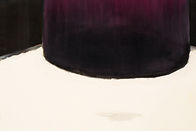



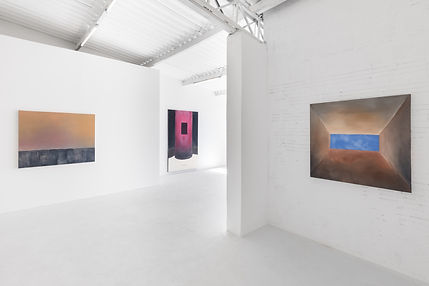
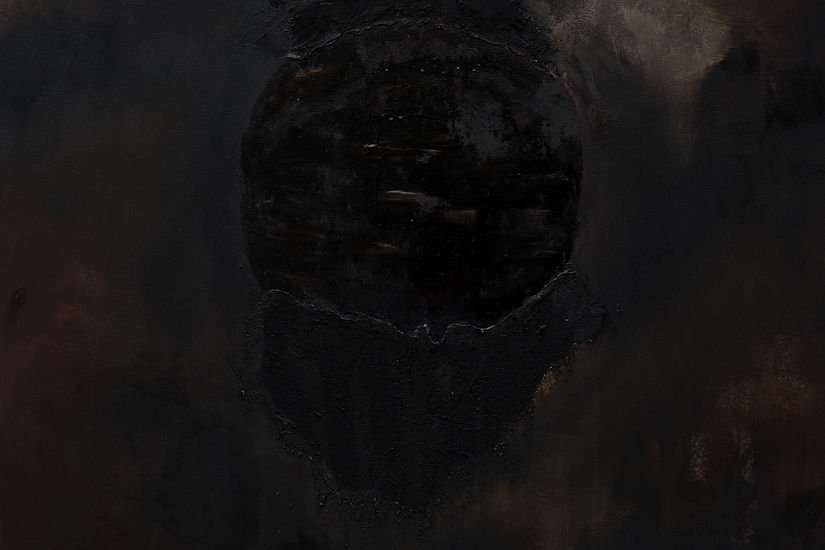

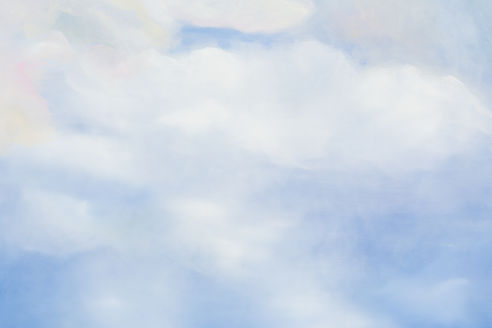


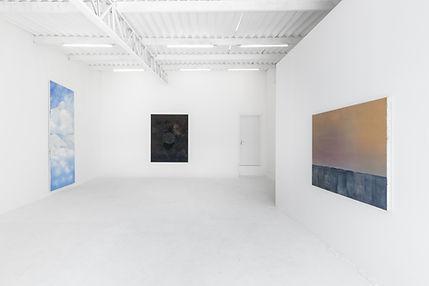


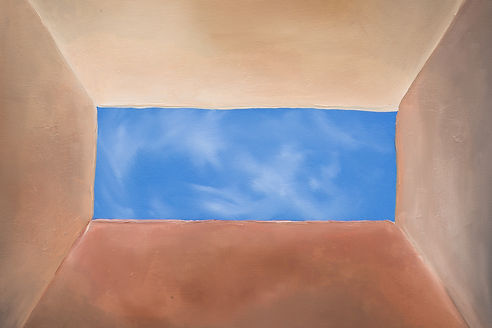
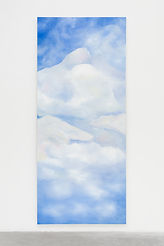
EXPOSICOES
o que ja passou por aqui
Especialmente pintadas para essa exposição, as telas do artista Caio Carpinelli se mostram como arcanos saborosos aos olhares curiosos. As obras de "Reduto" foram criadas e produzidas no próprio espaço do Caroço, local de residências artísticas e exposições localizado na Vila Ipojuca, o qual Caio é um dos fundadores. O ambiente familiar, em sua cidade natal, construiu um corpo forte para essa individual do artista, a segunda de sua trajetória, e que faz um grande contraste à primeira, nascida na pandemia, que contava com obras de seu acervo desde 2015. Em conversas com o artista, pude perceber o caráter misterioso que ele naturalmente atribui à todo seu trabalho. O fato de ele dividir comigo algumas sugestões e detalhes das obras expressa sutilmente que, o que Caio considera uma história bem contada contém só os elementos necessários, um pouco do oculto e o tempo de pintá-la.
Em "Reduto", ainda podemos observar o misto do abstrato e do concreto normalmente já retratado em seu trabalho. Dessa vez, uma profunda relação entre ele e o local de produção foi estabelecida, e ele me conta: " A interação com o espaço do projeto, com os detalhes ao meu redor, as pessoas, tornou todo o processo diferente, mais humano, e o que eu pinto de forma até inconsciente absorveu de forma incrível todos esses elementos."
Além disso, Caio contou muitas histórias e passeou por diversos assuntos, de todo tipo de origem. Temas principalmente de natureza essencial ou cinestésica, como a liberdade, a curiosidade e o medo. O mistério do que se esconde no escuro, e a confiança para além da visão. O adentrar, o sair e o transitar. A impermanência e o movimento.
Eu me senti "desconvidada" a ver a história que estava sendo construída ali, na costura entre uma obra e outra, porque a sugestão para que eu mesma a construísse, e à todos que verão a exposição, é muito estimulada pelo próprio Caio.
Ao mesmo tempo, esta exposição carrega o incômodo de uma narrativa pictórica sem linearidade, e junto disso, a total suspensão do tempo, que faz com que a exposição seja fácil de habitar por muitos minutos de observação silenciosa.
E por fim, ao mergulhar em cada tela, esse observador é assim: Não curioso o suficiente para deixar de ter medo da escuridão, do breu e das sombras; Nem corajoso o suficiente para desbravá-las.
E para trazer alívio, como ritmo natural, às vezes, também é observado um lapso nessa realidade tão sólida. Um reduto, uma estrutura que te protege, te alivia os olhos, como uma fortaleza, simbólica ou física, um foco de luz ou um céu azul.
Aproveito para deixar aqui junto com esse texto, um conto anônimo que combina tanto com o acaso de oportunidades que essa exposição nos trouxe, que eu nem tenho coragem de deixar de dividir.
Ele esbarrou comigo no meio do processo de escrita, entendimento, de maneira simples e ancestral, e que faz muito mesmo sentido junto dessa exposição. E que caótico e oracular forma de terminarmos.
"Conta-se que um Mestre zen estava fazendo uma pintura no palácio do Rei, e o Rei estava sempre perguntando:
Está pronta?
E toda vez ele dizia: ”Espere mais um pouco".
Passaram-se anos e o Rei disse: Está levando muito tempo. E você não permite que eu entre na sala." Porque ele se trancava na sala para pintar - " E eu estou envelhecendo. Minha curiosidade em saber o que você está fazendo nessa sala aumenta cada vez mais. A pintura ainda não está pronta?"
O mestre disse: "A pintura está pronta a muito tempo. Mas esse não é o ponto. Você ainda não está pronto. Eu o estou observando, e, ao menos que você esteja pronto, à quem mais eu mostrarei?"
A existência está aí, sempre esperando, sempre pronta. É uma paciência infinita, esperando, mas você não está pronto.
Conta-se que o Rei finalmente ficou pronto, e o pintor disse: Muito bem, chegou a hora.
Entraram na sala. A pintura era realmente maravilhosa. Era difícil dizer que era uma pintura - parecia real. Ele pintara montanhas, vales que pareciam tridimensionais, como se existissem. E ao pé das montanhas havia um pequeno caminho que levava a algum lugar interior.
Agora vem a parte mais difícil da história.
O rei perguntou: Aonde leva essa estrada?
O pintor disse: Eu mesmo não viajei por essa estrada, mas espere, eu vou ver.
E entrou pelo caminho, desapareceu por entre as montanhas e nunca mais voltou.
É isso que significa um mistério. Diz muitas coisas sem dizer nada. Se você entrar na natureza para ver onde ela leva, não fique do lado de fora fazendo perguntas, porque nada pode ser feito - você precisa entrar nela. Se entrar, nunca voltará, porque no próprio movimento de entrada em existência, você estará perdendo seu ego, estará desaparecendo. Você alcançará seu objetivo, mas nunca voltará para contar a história. O pintor jamais voltou.
Ninguém jamais volta. Ninguém pode voltar, porque quanto mais existencial você se torna, mais se perde.
A existência abre milhares de portas para você, mas você fica de fora e quer saber coisas a respeito dela pelo lado de fora. Não há nada do lado de fora da natureza - tudo está dentro. O todo é interior. E a mente está tentando o impossível - está tentando ficar do lado de fora, para observar, ver o que significa.
Não, você tem que participar. Tem que estar dentro dela, se unificar, e dispersar-se como uma nuvem a paradeiros desconhecidos.”
Texto sem autoria definida.
textos por marina leite
.png)
Especially painted for this exhibition, the canvases by artist Caio Carpinelli appear as delicious arcana to curious eyes. The works from "Reduto" were created and produced in the very space of Caroço, an artistic residency and exhibition venue located in Vila Ipojuca, where Caio is one of the founders. The familiar environment in his hometown built a strong foundation for this solo exhibition, the artist's second, which contrasts greatly with his first, born during the pandemic and featuring works from his collection dating back to 2015. In conversations with the artist, I could sense the mysterious nature that he naturally attributes to his entire body of work. The fact that he shared with me some suggestions and details of the pieces subtly expresses that what Caio considers a well-told story contains only the necessary elements, a bit of the hidden, and the time it takes to paint it.
In "Reduto," we can still observe the mix of abstract and concrete, often depicted in his work. This time, a deep connection between him and the production space was established, and he shared with me: "The interaction with the project’s space, with the details around me, and the people, made the entire process different, more human, and what I paint, even unconsciously, absorbed all these elements in an incredible way."
Moreover, Caio shared many stories and explored various subjects, from all kinds of origins. Topics mainly of an essential or kinesthetic nature, such as freedom, curiosity, and fear. The mystery of what hides in the dark, and trust beyond sight. Entering, exiting, and transiting. Impermanence and movement.
I felt "uninvited" to witness the story that was being built there, in the stitching between one work and another, because the suggestion for me to construct it myself—and for all those who will view the exhibition—is strongly encouraged by Caio himself.
At the same time, this exhibition carries the discomfort of a pictorial narrative without linearity, and along with that, the total suspension of time, which makes it easy to inhabit the exhibition for many minutes of silent observation.
And finally, by diving into each canvas, this observer is: Not curious enough to stop being afraid of the darkness, of the pitch black and the shadows; nor brave enough to explore them.
And to bring relief, as a natural rhythm, sometimes a lapse in this solid reality is also observed. A redoubt, a structure that protects you, relieves your eyes, like a fortress, symbolic or physical, a light focus or a blue sky.
I take this opportunity to leave here, along with this text, an anonymous tale that combines so well with the chance of opportunities that this exhibition brought us, that I don't even have the courage to not share it.
It bumped into me in the middle of the writing process, understanding, in a simple and ancestral way, and it makes a lot of sense with this exhibition. And what a chaotic and oracular way to end.
.png)
"It is said that a Zen master was painting in the king's palace, and the king was always asking:
Is it ready?
And every time, he would say: "Wait a little longer."
Years passed, and the king said: "It is taking too long. And you don't allow me to enter the room." Because he locked himself in the room to paint. "And I am getting older. My curiosity about what you are doing in there only grows. Is the painting still not ready?"
The master said: "The painting has been ready for a long time. But that is not the point. You are still not ready. I am watching you, and unless you are ready, who else would I show it to?"
Existence is there, always waiting, always ready. It is infinite patience, waiting, but you are not ready.
It is said that the king finally became ready, and the painter said: "Very well, the time has come."
They entered the room. The painting was truly marvelous. It was hard to say it was a painting — it looked real. He had painted mountains, valleys that seemed three-dimensional, as if they existed. And at the foot of the mountains, there was a small path that led somewhere inside.
Now comes the most difficult part of the story."
The king asked: "Where does this road lead?"
The painter said: "I myself have not traveled this road, but wait, I will see."
And he entered the path, disappeared among the mountains, and never returned.
That is what a mystery means. It says many things without saying anything. If you enter nature to see where it leads, do not stay outside asking questions, because nothing can be done – you must enter it. If you enter, you will never return, because in the very act of entering existence, you will be losing your ego, you will be disappearing. You will reach your goal, but you will never return to tell the story. The painter never returned.
No one ever returns. No one can return, because the more existential you become, the more you lose yourself.
Existence opens thousands of doors for you, but you stay outside and want to know about it from the outside. There is nothing on the outside of nature – everything is within. The whole is interior. And the mind is trying the impossible – trying to stay on the outside, to observe, to see what it means.
No, you have to participate. You have to be inside it, unify yourself, and disperse like a cloud to unknown destinations.”
Text of undefined authorship.
texts by marina leite


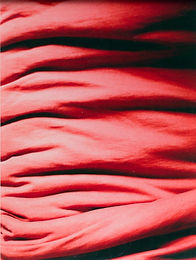
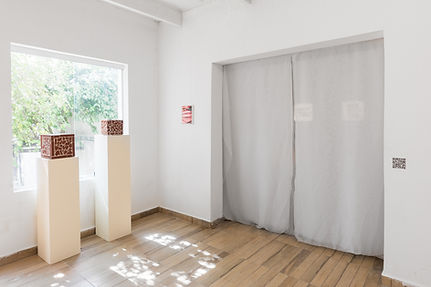
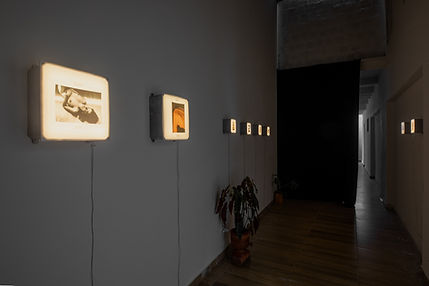
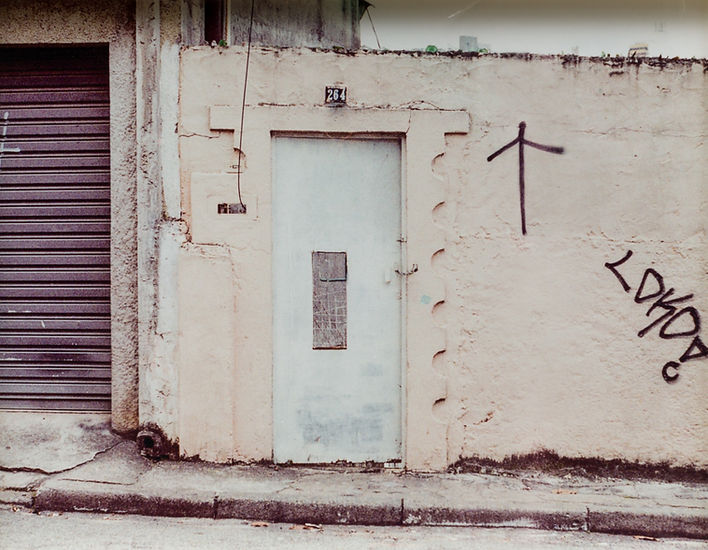

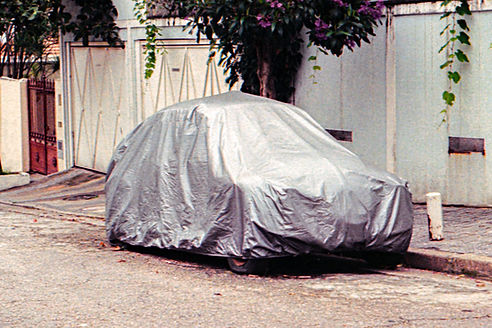
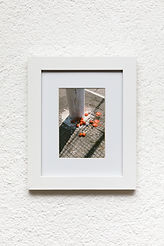
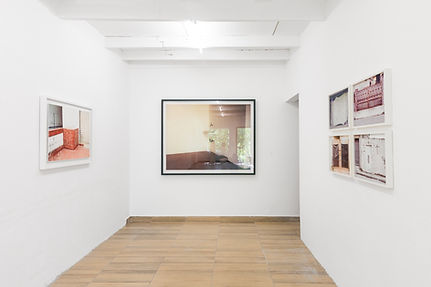


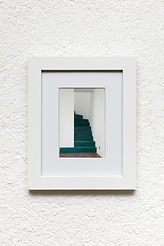
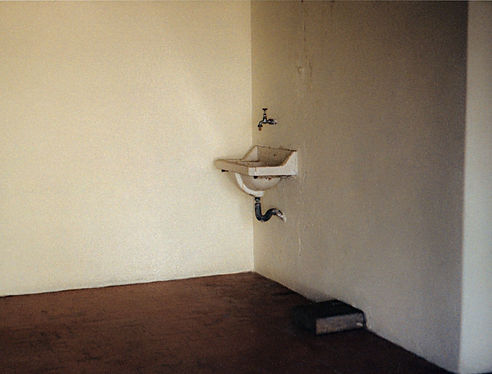

EXPOSICOES
o que ja passou por aqui
Percurso. Rastro
Tempo. Vestígio.
Indícios do que é orgânico no concreto diário
Por vezes poesia concreta e por vezes
Lírico
repleto subjetivo.
Em caminhos ondulados
a figura humana em pedaços: pequenos mosaicos
A cidade o corpo a luz
Suas formas.Escultura
Poesia do ordinário
Ready-made, a vida
o real.
Objetos deixados
reconfigurados.O sublime no banal
Esquecido ao acaso ao aguardo
do olhar: O outro
Por esses caminhos o trabalho de Marcella Camillo se revela e constrói, sutil e poeticamente, no que está deixado ao encontro do acaso em sua arquitetura do subjetivo. A ela interessa a poesia das formas e do tempo. No corpo e no que nos abriga, o concreto. Revelando sutilezas e nuances no que é bruto e formal, na intimidade e subjetividade do ser. O corpo – o nú – enquanto discurso de enfrentamento e dualidade.
Em Percurso ao Sublime, sua primeira exposição, Camillo apresenta suas imagens-esculturas em uma celebração da forma, no que lhe é íntimo e, por vezes, comum aos olhos de quem está de passagem. Assim como ela se coloca, observadora, construindo representações do que lhe é poético no real através de sua fotografia e da experimentação de novos suportes. Trazendo assim as suas, mas também as coletivas memórias afetivas contidas nos detalhes, como na presença dos cacos vermelhos de cerâmica, familiares e nostálgicos à memória paulistana.
Dividida em dois atos, a exposição percorre as duas temáticas centrais da pesquisa artística de Marcella, desenvolvida ao longo dos últimos dez anos.
No primeiro momento e movimento nos colocamos diante de suas observações sobre o que é urbano através de objetos, fachadas, elementos orgânicos no concreto e a percepção escultórica no que é ordinário na vida cotidiana. No segundo ato, vamos de encontro ao seu interesse e olhar delicado em relação ao outro, ao corpo e a atmosfera íntima e subjetiva do ser.
As imagens apresentadas, em sua maioria, compõem uma série desenvolvida virtualmente durante a pandemia, na qual a artista propõe a experiência do encontro e da troca a partir das pequenas telas dos aparelhos móveis. Ainda que dirigindo as cenas, lhe interessa o que se apresenta entre a pose e a descontração. O processo, o movimento não pensado, o acaso.
Do conforto à inquietação que suas imagens sugerem, Marcella nos convida e partilha, por meio de insinuações e sutilezas, aos caminhos do seu olhar.
textos por jéssica mangaba
.png)
Trajectory. Trace
Time. Vestige.
Indications of what is organic in the daily concrete
Sometimes concrete poetry and sometimes
Lyric
full of the subjective.
In winding paths
the human figure in pieces: small mosaics
The city, the body, the light
Their forms. Sculpture
Poetry of the ordinary
Ready-made, life
the real.
Objects left
reconfigured. The sublime in the banal
Forgotten by chance, awaiting
the gaze: The other.
By these paths, Marcella Camillo's work is revealed and constructed, subtly and poetically, in what is left to encounter by chance in her architecture of the subjective. She is interested in the poetry of shapes and time. In the body and in what shelters us, concrete. Revealing subtleties and nuances in what is raw and formal, in the intimacy and subjectivity of being. The body – the nude – as a discourse of confrontation and duality.
In Percurso ao Sublime, her first exhibition, Camillo presents her image-sculptures in a celebration of form, in what is intimate to her and, at times, common to the eyes of those just passing by. Just as she places herself as an observer, constructing representations of what is poetic in the real through her photography and the experimentation with new mediums. In doing so, she brings not only her own, but also the collective, affective memories contained in the details, such as in the presence of the red ceramic shards, familiar and nostalgic to the memory of São Paulo.
.png)
Divided into two acts, the exhibition explores the two central themes of Marcella’s artistic research, developed over the last ten years.
In the first moment and movement, we are presented with her observations of what is urban through objects, facades, organic elements in concrete, and the sculptural perception of the ordinary in everyday life. In the second act, we encounter her delicate interest and gaze towards the other, the body, and the intimate, subjective atmosphere of being.
The images presented, mostly, form a series developed virtually during the pandemic, in which the artist proposes the experience of encounter and exchange through the small screens of mobile devices. Even though she directs the scenes, she is interested in what emerges between pose and relaxation. The process, the unplanned movement, the chance.
From the comfort to the restlessness suggested by her images, Marcella invites and shares, though insinuations and subtleties, the paths of her gaze.